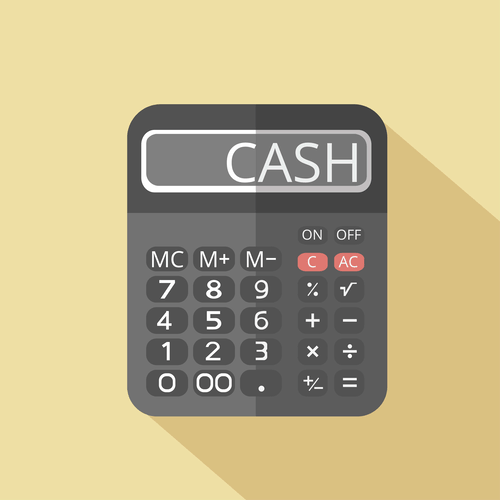
In contrast, there is no journal entry is required under the gross method as the transaction was recorded at the gross amount at the date of purchase and the company would make the full payment without the discount. The amount of the discount is determined by the terms of the agreement and the type of discount available. Ultimately, purchase discounts can have a positive impact on a company’s cash flow by improving its liquidity. Let’s assume Craig’s Retail Outlet purchase $1,000 worth of shirts from a manufacturer with credit terms of 2/10, n/30. Craig will receive a $20 discount if he makes his payment during the 10-day discount period otherwise he will owe the entire $1,000 at the end of the month. This might sound like a small reduction in price, but it can add up if every purchase a retailer makes is reduced by the same percentage.
Best Account Payable Books of All Time – Recommended

On the other hand, the seller’s incentive to offer discounts is simply the fact that he is going to receive the total amount much earlier than the requested date. With every day that the payment is not received, theseller or receivable has an opportunity cost– in terms of the financial returnhe could have otherwise generated. A buyer debits Cash in Bank if a purchase return or allowance involves a refund of a payment that the buyer has already made to a seller.
Accounting for Interest Payable: Definition, Journal Entries, Example, and More
Generally speaking, if one way will require more work to complete but will result in higher quality outcomes, this should definitely be considered in the process. Still, other methods might save time but require more resources or take longer to execute. After researching the various methods available and matching them up with your individual situation, you should better understand what will work best for your organization. Choosing the right method for your business is an important task that should not be taken lightly.
Under Periodic Inventory System
If the purchaser doesn’t pay for the goods in the first 10 days, the entire purchase price must be paid in 30 days. If you’re a business owner, it’s essential to understand the difference between the net method and gross method of accounting for purchase discounts. Purchase Discounts, Returns and Allowances are contra expense accounts that carry a credit balance, which is contrary to the normal debit balance of regular expense accounts. Crediting discount received has the effect of reducing gross purchases by the amount of cash discount received. Consequently, payables are debited to reduce their balance to the amount that is expected to be paid to them, i.e. net of cash discount. Therefore, purchases, along with any payables in the case of a credit purchase, are recorded net of any trade discounts offered.
- The amount of the discount is determined by the terms of the agreement and the type of discount available.
- The illustration would also illustrate under both perpetual and periodic inventory systems.
- Tata Motors has extended the July discounts into August as the Harrier has benefits up to Rs 1.20 lakh in August.
- If that occurs, the company will record the equipment at its cost of $19,800.
- If the business does not pay within the discount period and does not take the purchase discount it will pay the full invoice amount of 1,500 to the supplier and the discount is ignored.
- The same as the perpetual inventory system, there is a journal entry needed under the gross method to record the adjustment of discount lost.
Accounting For Purchase Discounts: Net Method Vs. Gross Method
- Purchase discounts can be a great way to increase sales and boost your bottom line.
- 3/15 net 30 would mean that the company will get a 3% trade discount if the payment is settled within 15 days.
- The credit term usually specifies the amount of discount together with the time period it offers, e.g. “2/10 net 30” or “2/10 n/30”.
- Shaun Conrad is a Certified Public Accountant and CPA exam expert with a passion for teaching.
The journal entry for a purchase discount is recorded by debiting accounts payable and crediting both cash paid and purchase discount. Purchase discounts are often given in the form of a percentage off the total amount of the invoice. The cash purchase discounts refer to the discount received when a business settles the payment within the credit term.

A buyer debits Accounts Payable if the original purchase was made on credit and the payment has not yet been made to a seller. Hence, the total accounts payable become a total of $15,000 ($1,470 + $30) the same as the original invoice amount. On 1st January, Dolphin Inc. purchased goods worth $2,000 from Blenda Co. The net amount is not mentioned earlier on in the analysis because it is still not confirmed if the company will be able to pay the dues in time to be able to avail of the cash discount.
Is the purchase discount a revenue or expense?
The incentive to the buyer of purchase discount is that the purchase costs decrease, and the business can save a considerable amount on procurement costs. However, the company could benefit by paying less to its suppliers for the same products or services that it purchases. 3/15 net 30 would mean that the company will get a 3% trade discount if the payment is settled within 15 days. However, if the payment is not settled within 15 days, the full amount will be due at the end of 30 days. For the past 52 years, Harold Averkamp (CPA, MBA) hasworked as an accounting supervisor, manager, consultant, university instructor, and innovator in teaching accounting online. For the past 52 years, Harold Averkamp (CPA, MBA) has worked as an accounting supervisor, manager, consultant, university instructor, and innovator in teaching accounting online.
Accounting for Purchase Discounts: Net Method vs Gross Method


